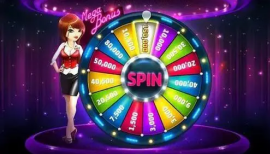where can i bet on the presidential race

broken heart
# 5 Card Poker Hands Probability
## Introduction to Poker Hands
p: Poker is a game steeped in tradition, strategy, and chance. One of the key components to mastering the game is understanding the probabilities associated with various poker hands. In a standard game of five-card poker, players are dealt five cards from a standard 52-card deck, and certain combinations of these cards represent different hands. Each hand has its odds based on how likely it is to be dealt such a combination. This article will delve into the probabilities associated with various 5 card poker hands, providing a comprehensive understanding for both amateur and seasoned players alike.
## The Importance of Understanding Probabilities
p: Knowing the probabilities of various poker hands can significantly influence a player's strategy. It allows players to make more informed decisions about when to fold, call, or raise based on the strength of their hands and the bets on the table. In a game where luck plays an essential role, understanding these probabilities can give a player an edge over their opponents.
## The Standard Poker Hands
p: Poker hands are ranked based on the rarity of their combinations, with some hands being easier to obtain than others. The traditional rankings, from highest to lowest, are as follows: Royal Flush, Straight Flush, Four of a Kind, Full House, Flush, Straight, Three of a Kind, Two Pair, One Pair, and High Card. Each of these hands has a different probability of being formed from a five-card draw. Understanding these ranks lays the foundation for calculating the probability of being dealt each hand.
## Royal Flush
p: The Royal Flush is the apex of poker hands, consisting of ten, jack, queen, king, and ace of the same suit. The probability of being dealt a Royal Flush in a standard 5-card poker game is exceptionally low. With only four possible combinations (one for each suit), the odds are roughly 1 in 649,740. This rarity adds to the awe and excitement of achieving such a hand in poker.
## Straight Flush
p: A Straight Flush, which consists of five consecutive cards of the same suit, is the next highest hand. There are 40 possible Straight Flush combinations in a 52-card deck, which translates to odds of approximately 1 in 72,193 of being dealt a Straight Flush. While still rare, it is significantly more common than a Royal Flush.
## Four of a Kind
p: Four of a Kind is a powerful hand consisting of four cards of the same rank. A player can achieve this hand by combining one rank with any other card. There are 624 ways to draw Four of a Kind from a 52-card deck, giving it a probability of about 1 in 4,165. The presence of this hand in a poker game can shift the dynamics significantly.
## Full House
p: A Full House combines three cards of one rank and two cards of another rank. This hand occurs more frequently than the aforementioned hands, with 3,744 combinations available. The probability of being dealt a Full House is approximately 1 in 694. This solid hand can often win against a range of others in a typical poker game.
## Flush
p: A Flush, defined by five cards of the same suit that are not in sequence, holds a probability of about 1 in 508. With 5,108 possible combinations, this hand is more common than a Full House but still provides a strong competitive edge during a game.
## Straight
p: A Straight, made up of five consecutive cards of any suit, presents players with probabilities that are relatively favorable. There are 10,200 combinations leading to a Straight, resulting in odds of approximately 1 in 254. This hand can be quite powerful against many opponents, especially in a no-limit game.
## Three of a Kind
p: Three of a Kind consists of three cards of the same rank and two others that do not match. There are 54,912 possible combinations of Three of a Kind in a standard 52-card deck, which translates to odds of about 1 in 47. This hand is more achievable and can often lead to an interesting showdown among players.
## Two Pair and One Pair
p: As we delve into lower-ranked hands, the probabilities increase. Two Pair has 123,552 combinations, giving players odds of approximately 1 in 21 of being dealt such a hand. One Pair, which counts among the most common winning hands in poker, carries 1,098,240 possible combinations, leading to a probability of roughly 1 in 2.36. Understanding these hands can help players adjust their strategy accordingly.
## Conclusion
p: Mastering poker involves not just understanding the ranks of the hands but also calculating the probabilities associated with them. Familiarizing oneself with these odds can enhance a player's confidence and improve their gameplay strategy. Due to the staggering variations of potential combinations, the world of five-card poker remains an exciting and ever-challenging pursuit. With this knowledge, players can approach each game with a strategic mindset, ready to engage, bluff, and win at the poker table.
9 ball pool casual arena,craft survival challenge,siri
taxi sim,go trade



